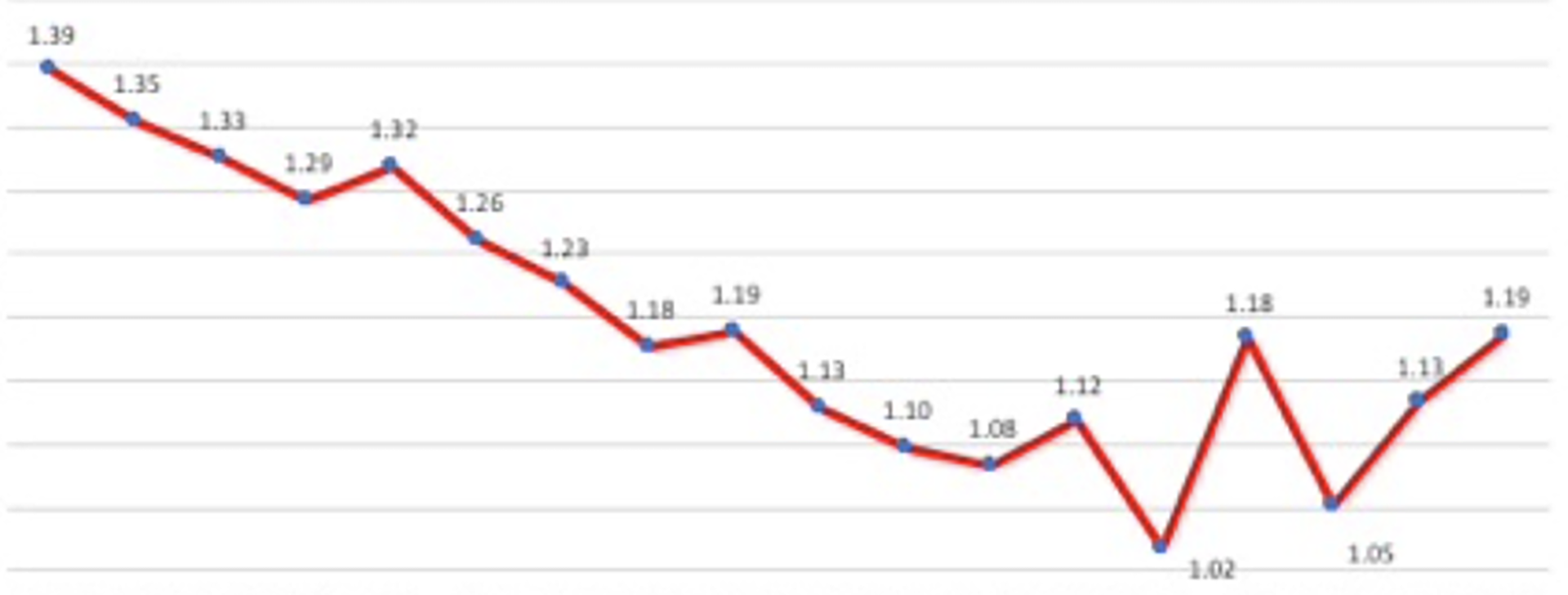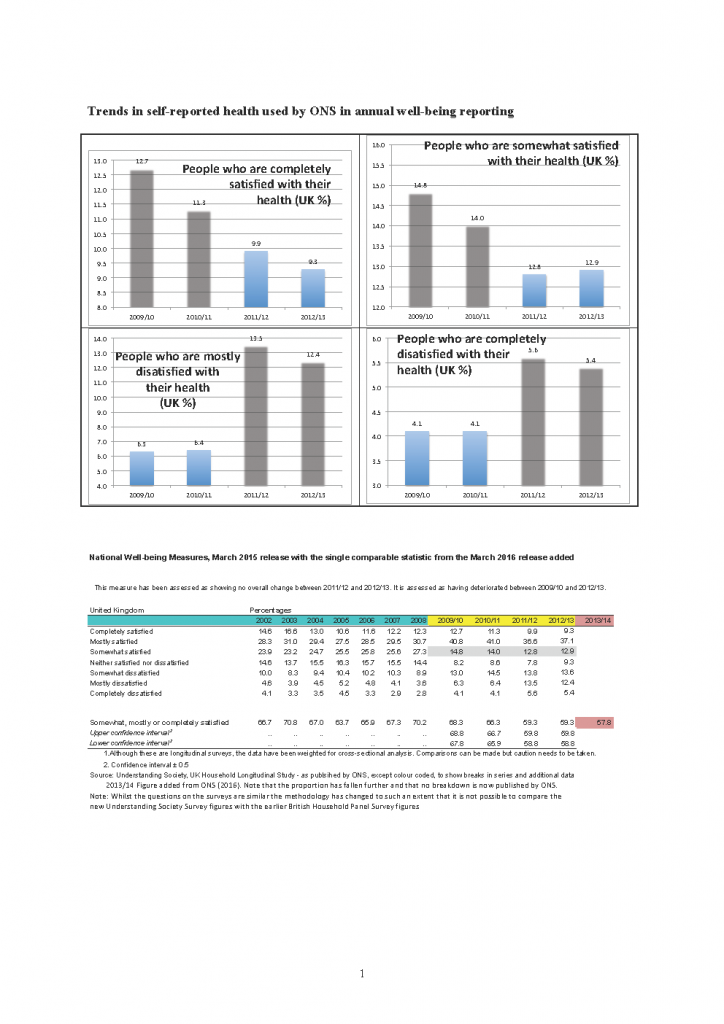Public Health was declining rapidly before the Brexit vote

Self-reported health had been progressively declining year on year since 2010. In the years before 2010 up to 70% of the population were somewhat, mostly, or completely satisfied with their health and there was no downwards or upwards trend. In March 2016 the main health self-reported component of David Cameron’s much vaunted “happiness index” had fallen to its lowest ever recorded level, just 57.8% of the UK population were content with their health. Such a rapid and large fall does not occur because of population ageing. It is associated with the period of increasing austerity and public sector cuts. It represented a remarkable decline in national public health.
The latest data shown in these graphs is for early 2013. In March 2016 ONS reported that: “The proportion of people aged 16 and over in the UK who were somewhat, mostly or completely satisfied with their health was lower in the financial year ending 2014 (57.8%) than in the previous year (59.3%). The way in which people view their health is crucial to well-being.” The most recent figure is not included in the graphs below because it is an aggregate statistic, but it shows that the falls in health have continued; ONS have not yet released the disaggregated statistics.
No newspaper or TV channel reported this rise in people saying their health had worsened. Similarly, there was no press release issued by ONS for the news of the huge rise of deaths on June 23rd: – a net rise of 52,000 deaths in the year to July 2015 as compared to the previous year. Death rates had also risen slightly for some elderly groups in earlier years between 2010 and 2014, but the 2015 rise was unprecedented in recent history – in both relative and absolute terms. The last time a rise as great as that to July 2015 had occurred was in the year to 1940 upon the outbreak of the Second World War. The graphs in the article this extract is taken from show the absolute percentage point rise in mortality rates by age in the year to July 2015 as compared to the year before then, and the relative rise in mortality. Clearly the old suffered most no matter how change is measured, and the oldest and almost certainly the most frail have suffered most of all.
Read the full Public Sector Focus Article here

Trends in UK self-reported health